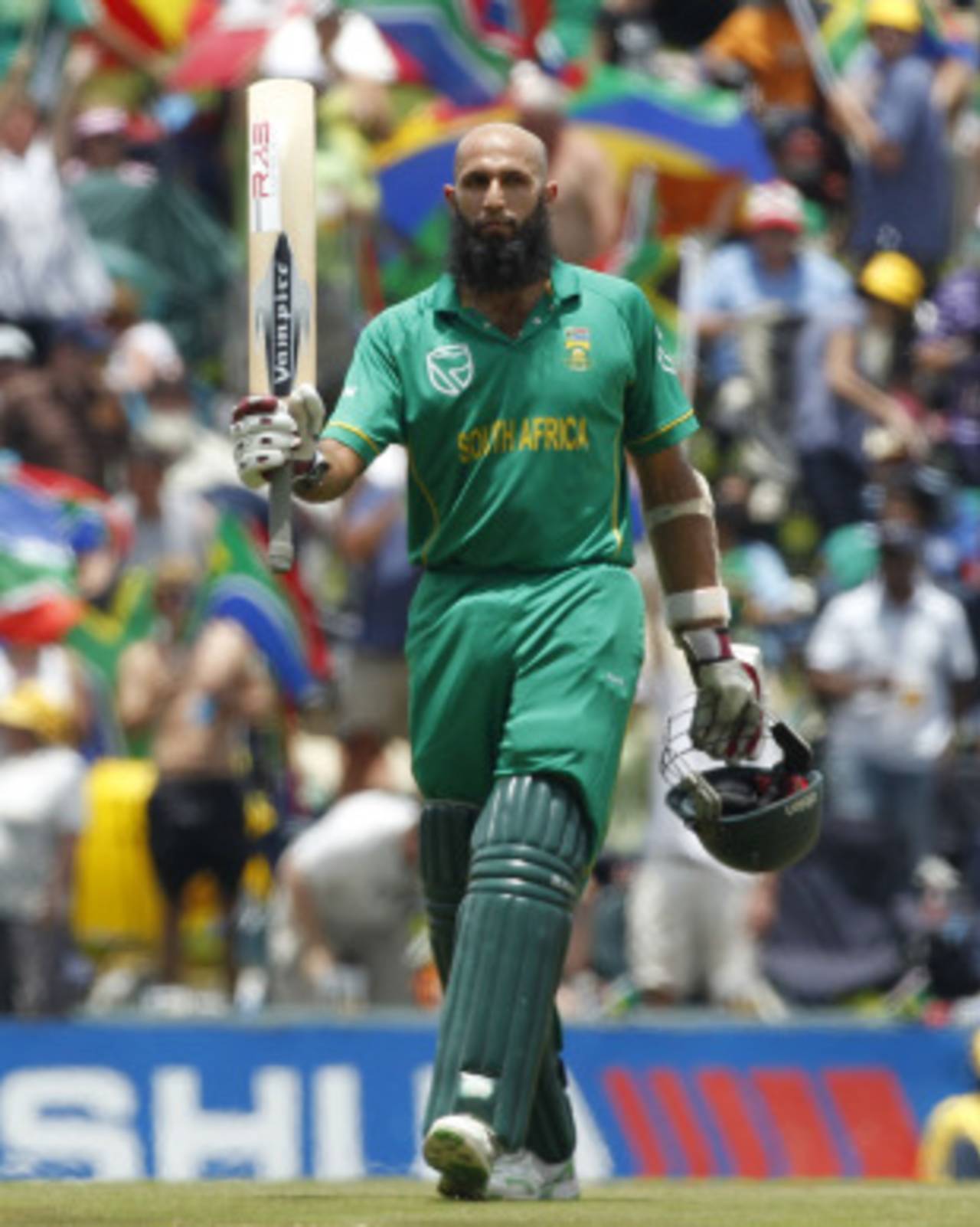Measured approach pays off for Amla
In Centurion the South African opener learnt how to combine Amla the one-day aggressor with Amla the anchor to set up a strong total
Firdose Moonda at Supersport Park
23-Jan-2011

Hashim Amla made his sixth one-day century of the past 11 months • Associated Press
Hashim Amla took 30 consecutive singles to reach his half-century. It was a much more measured approach to the one he employed when he reached his two other half-centuries in the one-day series against India, and it was deliberate.
"I think I was drifting a bit in the first few games and I was playing too extravagantly," Amla said at the post-match press conference.
In the first ODI in Durban, Amla may well have still been on the sugar rush that he claimed possessed him during the Cape Town Test match. Even though both Graeme Smith and Colin Ingram went cheaply in that match, Amla was determined to attack. He laid in to Ashish Nehra in the sixth over, pulling him once and creaming him through the covers twice. He was scoring boundaries as often and as easily as he could and often going the aerial route to do so. His fifty came up off 35 balls and then he tried another smack, only to be caught by an agile Harbhajan Singh. South Africa went on to win the game by a bruising 135 runs.
In the fourth ODI in Port Elizabeth, it must have been something stronger than sugar. He hit Zaheer Khan for back-to-back boundaries and then sunk his teeth into Munaf Patel's bowling. Amla was hitting the boundaries in flashily, bending down on one knee and pulling, and rocking on his back foot to smash to midwicket. His fifty came with a slash to third man. In the end, he was run-out for 64, in a bizarre call for a second run that the usually cautious Amla would never take. South Africa won the match by 48 runs on the D/L method.
This time it was different, although he started with a carbon copy of his lethal cover drive. Smith was out early again and Amla decided that instead of a fireworks display, he would be a masterpiece. After racing to 20 off 22 balls, he reverted back to the Amla we once knew. The carefully, calculating batsman that didn't see the need to take risk and that didn't explode every few balls in bubbling-over madness. Together with Morne van Wyk, he turned the strike, over and over and over until the count had taken him past fifty. He was dropped on 71, but it didn't affect his mindset and he soldiered on.
This was the Amla most were accustomed to, punishing only occasionally and playing the spinners with style. The shot that got him to his 100 was a classic example of this. He ran the delivery from Sureh Raina fine, through third man. It was one more four for him and one more hundred for everyone. Even after the rain delay, when South Africa's batsmen were falling like flies in attempted blazes of glory, Amla stood firm. He added the singles he could and ended up unbeaten on 116. South Africa, again on the D/L method, won the match by 33 runs.
That all three of South Africa's victories in the series have come on days that Amla has had success says volumes. In the absence of Jacques Kallis, he is the glue that sticks the batting line-up together. Even when he is hyperactive mode, he is their anchor. There have been times in the series when Amla has looked "wild" as Kepler Wessels put it, but even then he was the top performer in the South African line-up.
"He is batting really well and he is really good nick. When you are on form like that, you have to lead the team and take them through and he has done that," MS Dhoni said, after admitting that his plans, to bowl around the wicket to Amla, often failed despite his bowler's best efforts.
Amla is truly the leader of the batting line-up and ended the series with 250 runs, was the only batsman from South Africa to score a century and his average of 62.50 towered above anyone else's. His series strike-rate was an astounding 94.69. In this innings he learnt how to combine Amla the one-day aggressor with Amla the anchor. "I had a good reminder of my role in the team," he said. What a role that is.
Firdose Moonda is ESPNcricinfo's South Africa correspondent